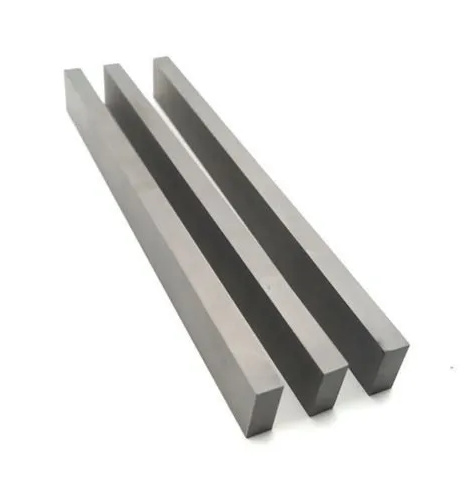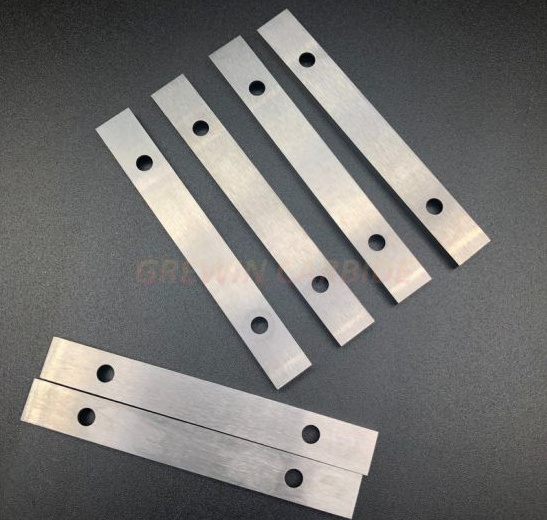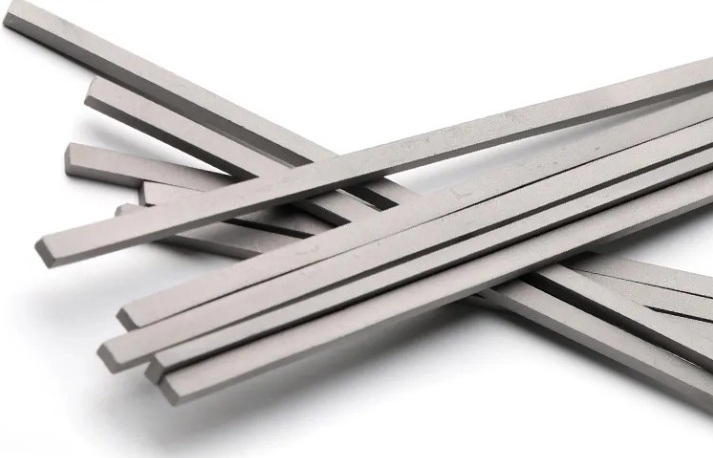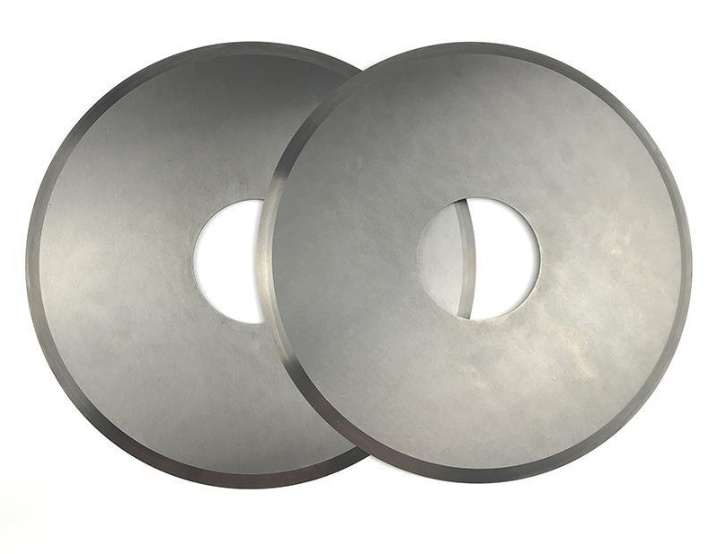理解する 超硬工具
超硬工具は、炭化タングステン粒子とコバルトのような金属バインダーを組み合わせた複合材料から作られています。なぜ超硬工具は業界で人気があるのか?その理由は以下の通りである:
- 耐摩耗性:超硬工具は、他の材料よりもはるかに優れた研磨条件に耐えることができるため、硬い材料の切断、研削、成形に理想的です。
- 高い強度と靭性:汗をかくことなく(あるいは、まったく壊れることなく)重い荷物を扱えるように作られている。
- 耐熱性:超硬工具は圧力がかかっても冷たく、高温下でも完全性を保つ。
さて、高性能のスポーツカーを所有することを想像してみよう。最大限の走行距離を維持するためにメンテナンスしたいと思いませんか?超硬工具にも同じ原理が当てはまります。適切なメンテナンスを行うことで、超硬工具の素晴らしい性能を最大限に引き出すことができるのです。

メンテナンスのポイント
維持するために 超硬工具 最高のパフォーマンスを発揮している。 キーメンテナンスのヒント あなたはそれに従うべきだ:
| メンテナンスのヒント | 説明 |
|---|---|
| 定期クリーニング | 腐食を防ぎ、シャープなエッジを維持するために、使用後は毎回ゴミや堆積物を取り除くこと。 |
| 損傷の検査 | 使用前と使用後に、欠け、ひび割れ、摩耗がないかチェックする。小さな欠陥が大きな問題につながることがあります。 |
| 適切な潤滑を行う | 運転中の摩擦や摩耗を減らすため、必ず推奨潤滑剤を使用してください。 |
| 乾燥した環境で保管する | 湿気は腐食の原因となります。工具は湿度の低い管理された環境で保管してください。 |
| オーバーヒートを避ける | 過度の熱は材料の構造を劣化させます。必要に応じて冷却装置を使用してください。 |
| 保護コーティングの活用 | 耐摩耗性と耐腐食性を高めるために、保護コーティングを施した工具を検討する。 |
| 定期的に刃を研ぐ | 工具がくすんでいると力が必要になり、作業効率が落ちる。必要に応じて適切な工具で研ぐ。 |
| 道具を素材に合わせる | 作業に適した超硬工具を使用してください。工具と材料の両方を損傷する危険性があります。 |
| 取り扱い注意 | 工具を落としたり、不必要な衝撃を与えたりすることは、微細骨折の原因となるので避けること。 |
| メーカーのガイドラインに従う | メーカーが提供するメンテナンスの推奨事項を必ず守ってください。 |
避けるべき一般的な間違い
どんなに優れた工具でも、適切なメンテナンスを怠ると故障することがあります。超硬工具の寿命を延ばすために、よくある間違いを避けましょう:
- 仕事に不適切なツールを使う:ドライバーをノミ代わりに使ったことはありますか?大失敗のもとだ。超硬工具も同じです。特定の素材や作業に適したタイプを使うこと。
- 定期点検の怠慢:小さなひび割れや欠けは大したことではないと思われるかもしれませんが、すぐに大きなダメージに発展する可能性があります。
- 不適切な研ぎ方:間違った砥石や技術を使うと、工具の刃先がダメになることがある。
- 潤滑の見落とし:適切な潤滑なしに運転すると、過度の熱が発生し、摩耗が加速されます。
- 不適切な保管方法:湿気の多い場所や無防備な場所に工具を放置すると、錆や腐食を招きます。






推奨製品とサービス
メンテナンスに関しては 超硬工具適切な製品に投資することで、すべての違いが生まれます。ここでは、信頼性の高い金属パウダーを10機種紹介する:
- グレードK10:優れた耐摩耗性と靭性で知られ、木工用工具に適している。
- グレードP30:耐衝撃性に優れ、鋼材加工に最適。
- C2微粒超硬合金:シャープなエッジと精度を必要とする用途に最適。
- C5カーバイドパウダー:研磨材や重作業に最適。
- タングステン・コバルト合金:高負荷のかかる作業にも抜群の強度を発揮。
- H10F:熱安定性に優れ、高速加工に適している。
- WC-Coコンポジット:汎用性と耐久性に優れた汎用グレード。
- ZK30UF:高精度加工で優れた表面仕上げを実現する超微粒子。
- VK10:耐摩耗性と靭性を兼ね備え、焼入れ材の切削に最適。
- グレードS10:アルミニウムやプラスチックのような非鉄材料用に設計されています。
各モデルにはそれぞれ長所があるので、パウダーを特定のニーズに合わせるようにしてください。
推奨される研磨方法と工具
超硬工具の研削は、芸術であると同時に科学でもあります。正しい方法と機器を使用することで、精度と寿命が保証されます。
| 研磨方法 | 説明 |
|---|---|
| ダイヤモンド砥石 | 摩耗を最小限に抑え、超硬工具の成形に威力を発揮。 |
| 立方晶窒化ホウ素(CBN) | より少ない熱と高い耐久性を必要とする用途に最適。 |
| 湿式粉砕 | 発熱を抑え、工具の熱損傷を防止。 |
| 細目ホイール | より滑らかな仕上げとシャープな刃先を実現。 |
| 自動工具研削盤 | 最小限の手作業で一貫した結果を提供。 |
| グラインダー | 外出先で研ぐのに便利だが、精度を上げるには熟練が必要。 |
| 電着ダイヤモンドホイール | 複雑な形状や小さな工具に最適。 |
| 多軸CNC研削盤 | 複雑な形状のための高度な精密研削 |
交換・修理の時期 超硬工具
タオルを投げ入れて超硬工具を交換するタイミングをどう見極めるか?それはバランスが重要です。いくつかのサインをご紹介しましょう:
- 過度の摩耗:研いでも性能が回復しない場合は、交換の時期です。
- 頻繁な欠けやひび割れ:持続的な損傷は、その工具が最盛期を過ぎていることを示しているかもしれない。
- パフォーマンス低下:加工品質が低下したり、工具に手間がかかったりする場合は、交換した方が費用対効果が高くなります。
- 材料不適合:より硬い素材やタフな素材に変更するには、工具のアップグレードが必要になるかもしれません。
疑問がある場合は、専門家に相談するか、メーカーの推奨事項を参照してください。
よくあるご質問
| 質問 | 回答 |
|---|---|
| 超硬工具をクリーニングする最良の方法は? | 表面を傷つけずにゴミを取り除くには、中性洗剤を含ませた柔らかいブラシか超音波洗浄器を使用してください。 |
| 超硬工具を自分で研ぐことはできますか? | しかし、ダイヤモンド砥石のような適切な器具と、正確さを求める安定した手が必要だ。 |
| 道具はどれくらいの頻度で点検すべきですか? | 使用前と使用後には必ず簡単な点検を行う。毎週または毎月、徹底的な点検を行う。 |
| 超硬工具の寿命は? | 適切なメンテナンスを行えば、超硬工具は使用状況にもよるが、スチール工具の10~20倍長持ちする。 |
| コーティングされた超硬工具は価値があるのか? | もちろん!TiNやAlTiNのようなコーティングは、耐摩耗性と熱安定性を高めます。 |
| チッピングを防ぐにはどうしたらいいですか? | 工具の取り扱いには注意し、過度な力をかけないようにし、加工中は適切なアライメントを保つこと。 |
| すべての超硬工具に潤滑が必要ですか? | ほとんどがそうだ。適切な潤滑は、熱を最小限に抑え、摩耗を減らす。常にメーカーのガイドラインを確認してください。 |

